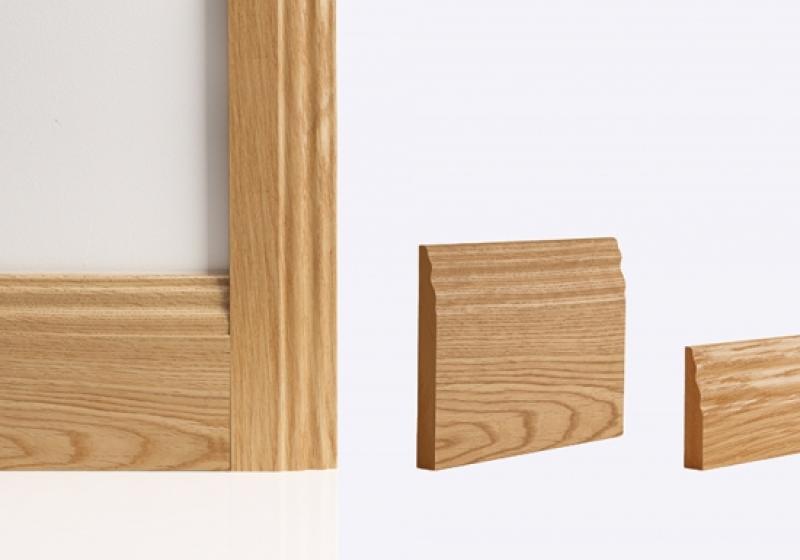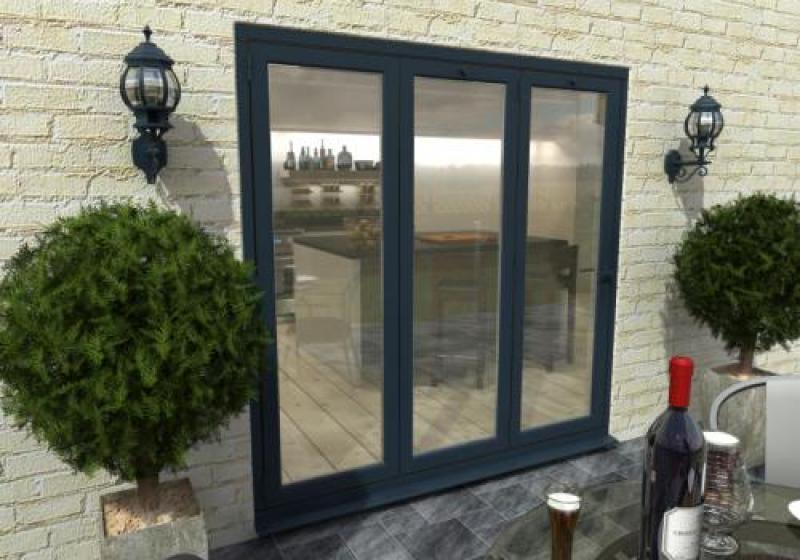Express Doors Direct ▸ Blog ▸ Door Frame Q&A: Your Problems Solved!
Last updated on February 17th, 2022 at 09:53 am
The doors in your home are among its most important items of furniture. When they work properly, you barely appreciate them; when they stop working, then they become a source of constant irritation. In many cases, problems with doors stem from problems with their framing. Let’s examine a few common causes of doorframe trouble, and see how they can be fixed.
How do I Tighten My Loose Door Frame?
Door frames can come apart over time thanks to gravity, and the stress placed on them when the door is opened and closed. If you notice that your door frame is coming loose from the wall, then you’ll be able to correct things with the help of a few screws. You’ll need large screws with wall plugs. These screws will need to exceed the depth of the frame by an inch or so in order to provide a secure fastening. Make sure that the frame is entirely level with the door and ground before getting started. Then drill three evenly spaced holes into the jamb and screw entire frame into place.
My Door Frame is not Level – How Do I Level It?
A misalignment between your door frame and the surrounding building can have undesirable consequences. Your door might not open or close properly, intersecting with the floor before it has a chance to draw fully shut. If your door frame is not level with the wall, then neither will the door itself be. Misalignments often occur when the door frame is warped or crooked.
To correct this, you’ll need to disassemble the door, and then insert corrective shims between the jamb and the frame. Measure accurately with a spirit level and correct accordingly, starting with the hinge side. Once you’ve got it nice and square, you’ll be able to remove and sand down any sections of jamb that protrude from the door, reassemble the casing and moulding, and remount the door.
My Doors Frame is Rotting, What do I do?
A rotting door frame is bad news, particularly when it occurs in a security-sensitive exterior doorway. Unfortunately, given that rot is caused by exposure to moisture, this precisely the location where it’s most likely to occur.
If a door frame keeps rotting, then it doesn’t matter how durable the door itself is – it will be easily kicked off its hinges. Rot in door frames is more easily prevented than cured. You can do this by sealing the wood, either with a coat of paint or woodstain.
You can test for rot by prodding the area under suspicion with a screwdriver. If it gives, then the fibres have begun to break down, eaten by the fungus that ultimately causes rot. It the damage is limited to a small part of the frame, then you might be able to get away with replacing it. But at the same time, it’s important to be thorough: even a little bit of leftover fungus can quickly spread to fill the section you’ve just repaired, and then you’ll be right back where you started.
A safer solution is therefore usually to replace the entire door, including all the framing elements. If your door was so old that the frame had begun to rot, then the chances are that a replacement will represent a worthwhile security upgrade, anyway.
How do I Fix My Cracked Door Frame?
When a door frame becomes cracked at the hinge, you’ll need to act quickly to prevent further deterioration. A repair kit works by filling the gap with a binding putty, which can then be sanded down, cleaned, and painted over so that it looks just like the surrounding timber.
First, you’re going to take some wood-filler and squeeze it into the crack. You should have enough that it sits slightly flush from the surrounding timber. Then, take a rubber-edged clamp and squeeze the door frame around the crack. You don’t need to apply too much pressure, just enough to keep the putty fixed while it dries. Then, drill a pilot hole into the same side of the frame and use a long screw to be sure that the side of the frame is attached as securely as possible to the surrounding structure of the building.

How do You Fix a Door Frame that is Too Small or Too Wide?
If your frame is a different size to the door it’s supposed to house, then you’re sure to encounter problems. This usually occurs when you swap out an existing door for a new one, on the assumption that the new one will fit the gap. Your best chance of avoiding this problem is to measure thoroughly before you make the investment. But there are things we can do to widen or narrow the size of the aperture.
If your door-frame is too wide, then you’ll need to use jambs to make up the difference. This will allow you to make up a gap of around twenty millimetres. If you need to make up less than ten, you’ll be able to do so by only modifying one side of the frame. Simply take off the casing and remove any existing shims from behind the jamb. You can then insert a few furring strips to bring out the framing. Before screwing into the wood, you should drill some small pilot holes. This will lessen the risk of the wood splitting.
How do you widen a doorway?
If you need to make the doorway wider, then you’ll have an entirely different task on your hands; you’ll need to cut a gap in the surrounding wall and extend the frame. While this is something you can take care of yourself, you might wish to bring in a skilled carpenter to ensure you don’t end up with a larger, crooked frame. If your doorway is just a little too small, however, you might consider reducing the size of the door itself. Most wooden doors can be trimmed by around 5mm per side.
In Conclusion
The quality of a door is limited by the quality of the frame that houses it. If your door frame is crooked or coming loose, then it’s better to act quickly to correct it than to allow the problem to fester and worsen. Or, better yet, you can take a proactive approach, and ensure that your door frames are adequately fastened and sealed before problems begin to manifest.
Related Posts:
"It is about the realities of what makes for an attractive, civilized, meaningful environment, not about fashion or what's in or what's out. This is not an easy job."
– Albert Hadley
Available in a range of sizes, designs and colours with a #MadeToMeasureDoors service available too.
Email [email protected] to book in for 2024.
































































